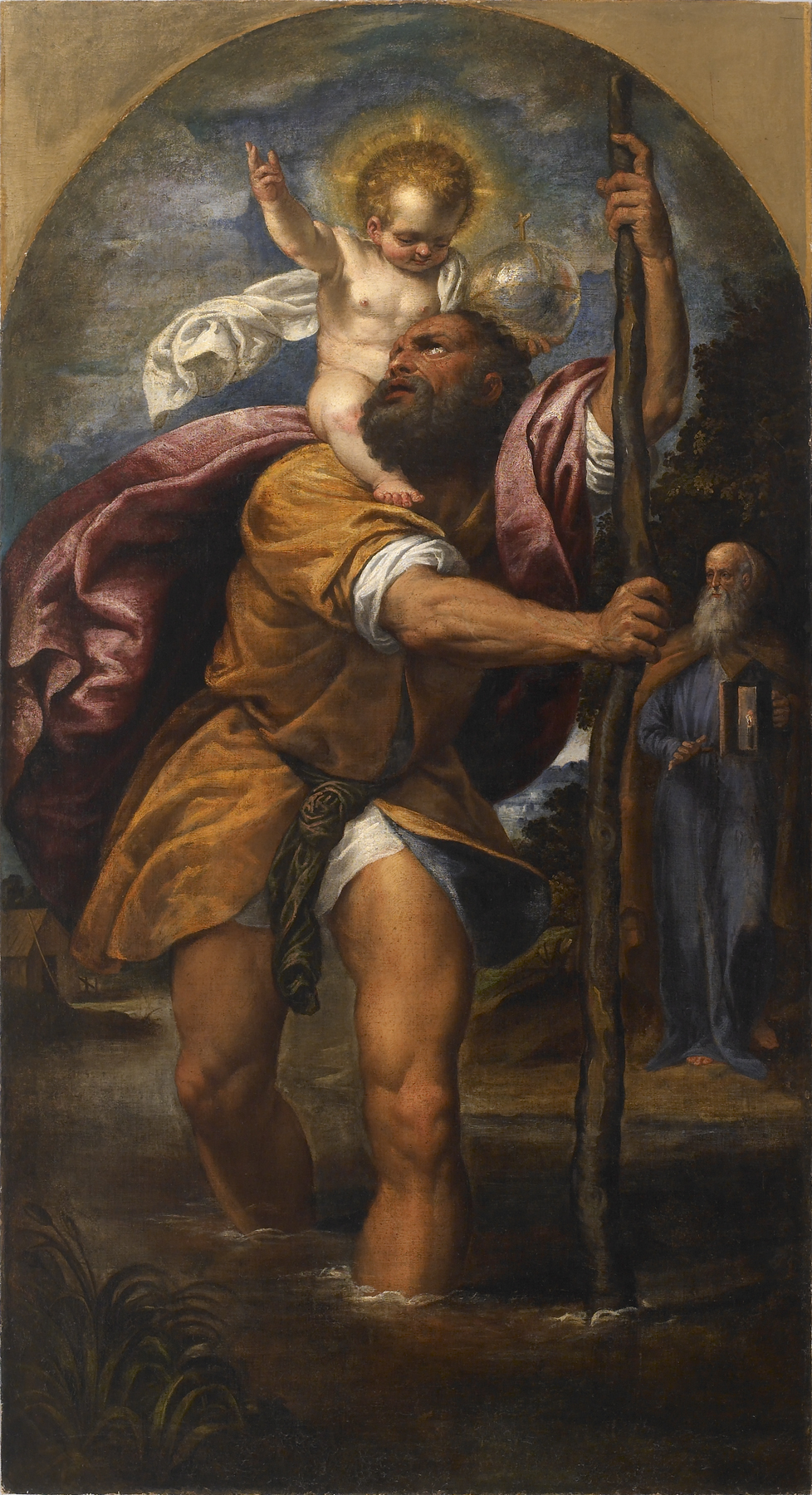St. Christopher and the Christ Child
(Renaissance Europe )
According to Christian legend, a giant helped travelers ford a river. He was surprised one evening when a little child appeared, asking to be transported to the opposite side of the river. The giant was perplexed by the tremendous weight of this small child, expressed here in his strained leg muscles. The child explained that he was carrying the sins of the world on his shoulders (hence the globe that the child holds in his left hand). Here the giant responds with ecstatic pleasure to learning that his passager is Christ. The giant became known as Christopher, which means "Christ-bearer."
Provenance
Provenance (from the French provenir, 'to come from/forth') is the chronology of the ownership, custody, or location of a historical object. Learn more about provenance at the Walters.
Don Marcello Massarenti Collection, Rome [date and mode of acquisition unknown] [1881 catalogue: no. 75; 1897 catalogue: no. 377, as Titan]; Henry Walters, Baltimore, 1902, by purchase; Walters Art Museum, 1931, by bequest.
Conservation
| Date | Description | Narrative |
|---|---|---|
| Examination | examined for condition | |
| 8/10/1976 | Treatment | cleaned |
| 8/10/1976 | Treatment | cleaned; examined for condition; other |
| 3/31/1977 | Treatment | cleaned |
| 4/1/2006 | Treatment | cleaned; inpainted |
Geographies
Italy, Venice (Place of Origin)
Measurements
Painted surface H: 83 1/16 x W: 45 1/2 in. (211 x 115.5 cm); Framed H: 101 5/8 × W: 64 × D: 4 3/4 in. (258.13 × 162.56 × 12.07 cm)
Credit Line
Acquired by Henry Walters with the Massarenti Collection, 1902
Location in Museum
Not on view
Accession Number
In libraries, galleries, museums, and archives, an accession number is a unique identifier assigned to each object in the collection.
In libraries, galleries, museums, and archives, an accession number is a unique identifier assigned to each object in the collection.
37.590


